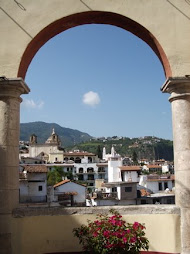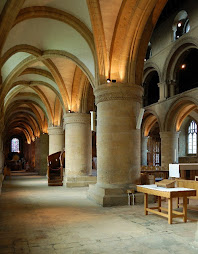British Summer Time (BST) came to an end yesterday. Britain returns to Greenwich Mean Time (GMT), making it now eight hours behind us in Singapore. Singapore doesn't bother with daylight savings time gimmicks because the island lies about 50 km north of the equator. At this latitude the days are always about twelve hours long. In the USA, Daylight Time was expanded by Congress in 2005 to begin earlier with and run later starting with calendar year 2007. American clocks will fall back on 1 November 2009.
26 October 2009
23 October 2009
Animation Nation
 Max Horovitz (voiced by Philip Seymour Hoffman) has anxiety problems. Image from the Mary & Max website.
Max Horovitz (voiced by Philip Seymour Hoffman) has anxiety problems. Image from the Mary & Max website.Singapore's annual Animation Nation 2009 festival finished this week. The Passengers managed to see two wonderful, whimsical features: Mary & Max and The Secret of Kells. The week of moving pictures was put on my the Singapore Film Society and hosted at the National Museum's (blogged here) lecture theater/cinema. The selections this year included cartoons from around the world and with varying tones of seriousness. Waltz with Bashir, animated recollections from Israeli soldiers, is definitely not a kids' movie, but the adventures of Brendan through the Irish wilderness in The Secret of Kells are a young boy's fantasy.
Both of the films we saw arrived on a diplomatic platform. Mary & Max, a really touching story about unlikely pen pals writing from Australia and New York City in the 1970's, came to Singapore as part of the cultural outreach of the Australian High Commission, and the Irish HC actually sent a representative to introduce the Secret of Kells as we saw the film on the festival's opening night. The diplomatic missions to Singapore often play a visible role in the island's social/cultural scene. In part, this serves to bring a bit of home to the various ex-pat communities here, but these countries also want to promote themselves to encourage business and trade relationships with Singaporeans. Next weekend begins Berlin Dayz, courtesy of the German Embassy Singapore.
 The cat Pangur Ban in The Secret of Kells gets his name from a Gaelic poem written by an Irish monk in the ninth century. More character sketches from the filmmakers here.
The cat Pangur Ban in The Secret of Kells gets his name from a Gaelic poem written by an Irish monk in the ninth century. More character sketches from the filmmakers here.
And did I mention The Secret of Kells weaves its tale around the creation of the famous Irish illuminated manuscript, the Book of Kells, made around 800 CE? What could be better?
13 October 2009
Down on the Corner, Out in the Street
Early reviews are trickling in about a new landmark taking shape in upper Manhattan, Columbia University's new interdisciplinary science building. The tower balances on pillars above a very active gym and fitness center at the corner of Broadway and 120th Street. The design by José Rafael Moneo places a largely glass facade toward the campus interior, but the architect reduced the transparency of the street-facing glass by cladding the tower with a grid of panels striated with diagonal slits on either side of the outer trusses. The textural effect recalls the landscaped hedges that top the group entrance hall of Rafael Moneo's expansion at the Museo Prado. The lowest story remains incomplete and unformed, but it is supposed to hold an inviting public cafe. For a multimedia tour of the construction site visit the campus newspaper's website.
The corner marks the convergence between Columbia, Teachers' College, Barnard, and Union Theological Seminary, and the architectural expression of self-importance for each institution means that no doors presently face onto this space. The presence of a public entrance or convenience on this spot would be a welcome, humanizing addition to the neighborhood. The more troubling relationship for the new structure is one of form and scale.
Columbia's main campus, stretching from 114th Street to 120th Street, largely conforms to McKim, Mead & White's fin de siécle plan for an enclosure of classical learning within classical, brick-faced architecture. The university has largely upheld these two tenets, with the exception of a Renzo Piano-designed student union and a handful of non-Western courses appended to the undergraduate core curriculum. However, the science building has no red brick materials or references to classical architecture. This is the disjunction that prompts former Columbia professor Barry Bergdoll to declare the building "provocative." Bergdoll is also right to acknowledging that the project creates a new focus on the north end of campus. Perhaps the visual role of this building will become clear with the construction of Columbia's new, and somewhat controversial, science-heavy campus in Harlem.
USA Soccer: Now some Better News
Contrary to yesterday's post, soccer is not unappreciated and unnoticed in the United States. In fact, the world's most popular spectator sport has finally found itself a place in world's largest entertainment market. Of course, soccer is not about to usurp college football or Nascar or the NFL from the nation's sporting liturgy, but the nation has slowly and steadily created opportunities to attract and retain passionate fans.
The most important effort has been the creation of Major League Soccer (MLS) in 1996. Major investments in America's domestic league began with ten teams in 1996 as an effort to capitalize on the enthusiasm generated by the 1994 World Cup finals held in the United States. Rather than splash out on top European or Latin American players in hopes of attracting huge crowds, as the ill-fated North American Soccer League did in the 1970's, the initial investors agreed to tight-fisted salary caps. Moreover, for the sake of nurturing domestic talent, i.e. the national team, each club was limited to carrying only five foreign-born players.
The experiment has undergone a number of growing pains. At first, many of the teams competed in giant stadiums designed for American football. Though these established venues were happy to lease out space in the spring and summer months, their over-sized dimensions meant that even a great turnout of 20,000 fans would bring a stadium to maybe 25% capacity. Now many franchises have sought out smaller, more intimate venues on college campuses or minor-league ballparks. LA and Columbus even have soccer-specific stadia.
The name change for Dallas taps into the current MLS trend: burnishing a side's soccer bonafides by imitating established club names in Europe. Incremental expansion has brought Real Salt Lake, Houston Dynamo, Toronto FC, and soon Philadelphia Union. Los Angeles even has Club Deportivo Chivas USA, an American offshoot of the established Guadalajara club and the area's Spanish friendly counterweight to flash LA Galaxy.
12 October 2009
USA Soccer: First the Bad News
Mexico is in. England is in. So is Italy, but Turkey is out, and Portugal is looking shaky. Saturday featured worldwide sporting excitement as the major European football (soccer) leagues paused their schedule for the penultimate game of the World Cup group qualifiers. The Americans had to travel to Central America and defeat Honduras if they wanted a place at next summer's World Cup finals in South Africa. But did anyone care in the USA?
Yesterday, the Passengers awoke early in Singapore to join some of my countrymen watching college football courtesy of new-fangled Slingbox technology. For all you Britons, college football is the Saturday ritual of autumn across the Atlantic that involves millions of people gathering in stadiums with seating for over 100,000 people to watch university students play (American) football. A college football Saturday features more than fifty games, but only about twenty really matter. To partake of this rite in Singapore, twelve hours ahead of New York, passionate alumni must choose between the afternoon games starting at midnight or the evening games that start at 8:00 AM Sunday morning. This week was the highly anticipated contest between Florida and Louisiana State, but we were Big Ten alumni so we cared more about Michigan vs. Iowa.
As we watched, we noted the results from the earlier European qualifiers that occasionally scrolled across the bottom of the screen, along with other college scores and listings for the baseball playoffs, but none of us knew what country USA was playing nor what the game meant for their chance to qualify. The second half of the match in Honduras was still going when the Michigan game finished so we decided to change channels and cheer for our country. Unfortunately, no station available to us was carrying the game. That's right, despite 300+ channels of cable television available to one Michigan household, not one station bothered to broadcast a major international soccer match.
UPDATE (14 October 2009): The difficulty in finding the USA vs. Honduras game on TV was abetted by the Honduras federation, which under FIFA rules holds the television rights as the home side, deciding to sell the US broadcast rights to a company which elected to show the game on an obscure closed-circuit broadcast. Similar, yet stranger, circumstances restricted the moot England qualifier in Ukraine to a pay-per-view, online-only event. However, both blackouts ultimately resulted from the calculations of major media outlets that the expense of buying television rights and altering established broadcast schedules would not garner the advertising revenues or ratings to justify airing a World Cup qualifier.
09 October 2009
Broadsheet typos - The Fourth Plinth
Even the venerable journalistic newspapers of Britain are showing signs of decline in the internet age. Fewer copy editors means more typographical errors in print and online. This one came from a Guardian review of, or maybe a comment on, Anthony Gormley's art installation that put ordinary Britons atop the usually empty fourth plinth in Trafalgar Square.
So it [Gormley's One & Other project] was popular before it began, and that popularity has not diminished. It has been widely celebrated as a democratic portrait of Britain in the 12st century.I love this error because the ambiguity provokes such enjoyable speculation. What did the author Jonathan Jones really intend to write? Was One & Other "a democratic portrait of Britain in the 12th century," an insightful, modern take on the formative decades following the Norman Conquest? Perhaps the text is correct and this refers to some system of describing an era by weight. A 12-stone (168 lbs./76.2 kg) century would be a sturdy lady but a well-proportioned chap (to the Americans: people are weighed in stone in Britain and Ireland at 14 pounds/stone). The other intention might be "in the 21st century," but this hardly seems humorous.
Gormley's installation was a provocative piece of theater and certainly a populist stroke of creativity. The article includes a worthwhile slideshow of what people choose to do when given an hour of public prominence. The newspaper also featured a review that contradicted Jones' critique.
02 October 2009
Können Sie mir helpfen?
The lost and found at Oktoberfest in Munich sorts all the mobile phones they receive according to manufacturer. Also the Fundbüro keeps an inventory of all its holdings using typewritten index cards. Let us both praise and mock great national traditions!
Subscribe to:
Comments (Atom)





.jpg)